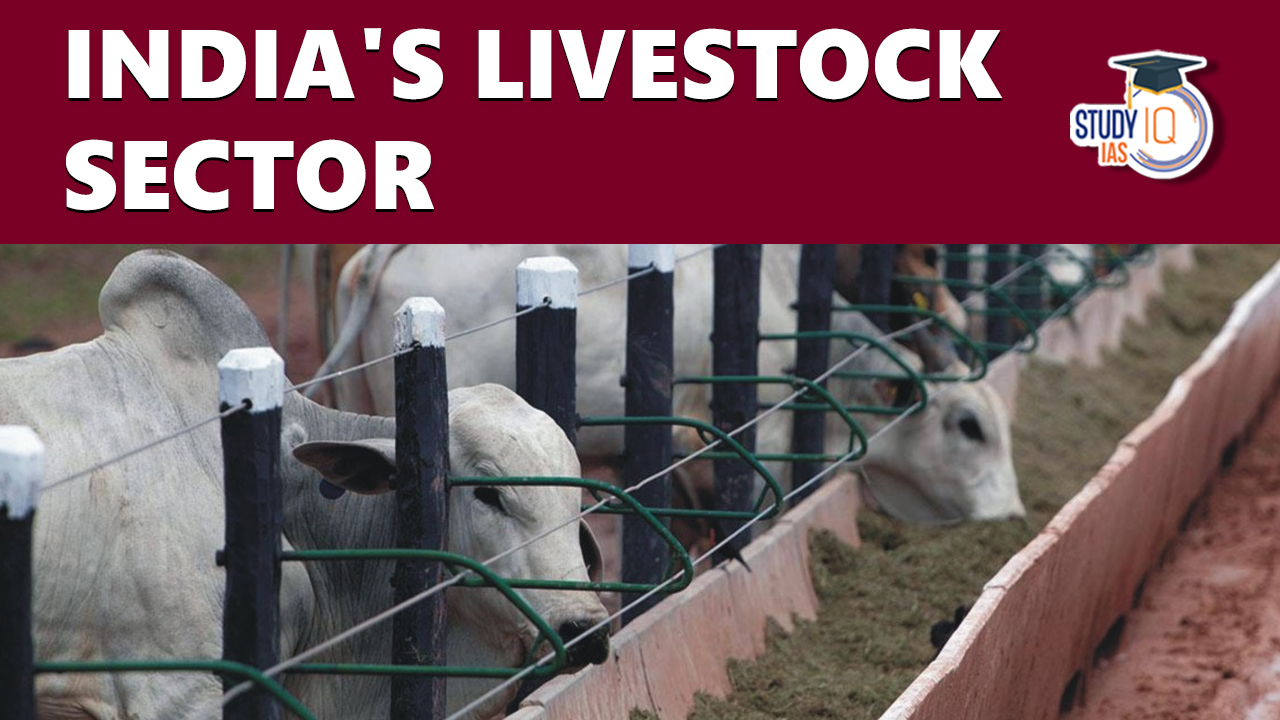Table of Contents
Context: Department of Animal Husbandry & Dairying (DAHD) is implementing the Credit Guarantee Scheme under Animal Husbandry Infrastructure Development Fund (AHIDF).
More on the News
About the Credit Guarantee Scheme
- The scheme aims to strengthen the credit delivery system and facilitate smooth flow of credit to the MSMEs engaged in Livestock sector without hassles of collateral security.
- Key Objectives:
- The main objective is to encourage lenders to focus on the viability of projects and provide credit facilities based on the primary security of the assets being financed.
- By providing access to financial assistance, it promotes investments in various areas of the livestock sector, such as dairy and meat processing, animal feed plants, breed improvement technology, waste management, and veterinary vaccine and drug manufacturing facilities.
- Beneficiaries: The scheme targets underserved sections of society, including first-generation entrepreneurs and underprivileged individuals, who often lack collateral security for their ventures.
- Funding:
- The DAHD has set up a credit guarantee fund trust of Rs 750 crore, which will cover up to 25 per cent of credit facilities extended to eligible MSMEs by lending institutions.
- The trust, formed in partnership with NAB Sanrakshan Trustee Company Private Ltd, a subsidiary of NABARD, ensures credit guarantee for MSMEs under the AHIDF scheme.
- Key Features of the Scheme:
- Interest subvention of three per cent,
- Loan of up to 90 per cent of the total project cost from any Scheduled Bank, National Cooperative Development Corporation (NCDC).
India’s Livestock Sector
- India is the highest livestock owner of the world. As per the 20th Livestock Census, the total Livestock population is 535.78 million in the country showing an increase of 4.6% over Livestock Census-2012.
- Livestock plays an important role in Indian economy:
- About 20.5 million people depend upon livestock for their livelihood.
- Livestock contributed 16% to the income of small farm households as against an average of 14% for all rural households.
- Livestock provides livelihood to two-third of rural community. It also provides employment to about 8.8 % of the population in India.
- Livestock sector contributes 4.11% GDP and 25.6% of total Agriculture GDP. The livestock sector grew at a CAGR of 7.9% during 2014-15 to 2020- 21 (at constant prices).
Significance of Livestock Sector for India
- Poverty Alleviation: Livestock-rearing provides a valuable source of income for small and marginal farmers who might have limited access to land for crop cultivation.
- Recycling Agricultural Economy: Livestock plays a crucial role in recycling agricultural resources. Animals and birds feed on crop residues and byproducts, converting them into valuable assets like draught power, dung manure, milk, meat, and eggs.
- Boosting Rural Economy: The livestock sector’s growth and productivity benefit the rural economy by creating employment opportunities in various aspects, such as animal husbandry, milk collection, transportation, processing, and marketing.
- Diversification of Income: Livestock-rearing offers a diverse income stream for farmers, especially those engaged in mixed farming practices.
Challenges faced by the Livestock Sector in India
- Disease Outbreaks: Frequent occurrences of diseases like Black Quarter infection, influenza, and Foot and Mouth Disease have a detrimental impact on the health and productivity of livestock.
- Cattle deaths due to lumpy skin disease in the country during the year 2022 stands at 1,55,366.
- Greenhouse Gas Emissions: The substantial population of ruminants in India contributes to the generation of greenhouse gases, making it challenging to reduce emissions.
- Livestock account for about 63% of all emissions from the agricultural sector in India.
- Decline of Local Breeds: Efforts to cross-breed native species with foreign stocks for genetic improvement have had limited success.
- The availability of artificial insemination services is also limited due to a lack of high-quality germplasm, infrastructure, and technical expertise.
- Insufficient Credit Access: Despite its significant contribution to the agricultural GDP, the livestock sector receives only around 12% of the overall state spending on agriculture and related industries.
- Financial institutions have largely overlooked the sector, leading to reduced access to credit for livestock farmers.
- Lack of Transparency: A considerable portion of the cattle population in India remains undocumented. Moreover, the markets for animal products are often dominated by unofficial middlemen.
- Inadequate Infrastructure and Services: The livestock sector requires better infrastructure, including veterinary services, feed and fodder markets, and transportation facilities.
- Limited Technology Adoption: The adoption of modern technologies and best practices in livestock management is relatively low. Farmers need better access to knowledge and training to improve their livestock-rearing techniques.
- Land Degradation and Water Scarcity: Livestock grazing and rearing practices, if not managed sustainably, can lead to land degradation and exacerbate water scarcity issues in certain regions.
Government Initiatives
| Development Programmes |
|
| Disease Control programmes |
|
| Infrastructure Development Fund |
|


 Phone-tapping in India, Legal Framework ...
Phone-tapping in India, Legal Framework ...
 Bihar Assembly Election 2025 Dates, Poli...
Bihar Assembly Election 2025 Dates, Poli...
 Jharkhand High Court Assistants Admit Ca...
Jharkhand High Court Assistants Admit Ca...





















